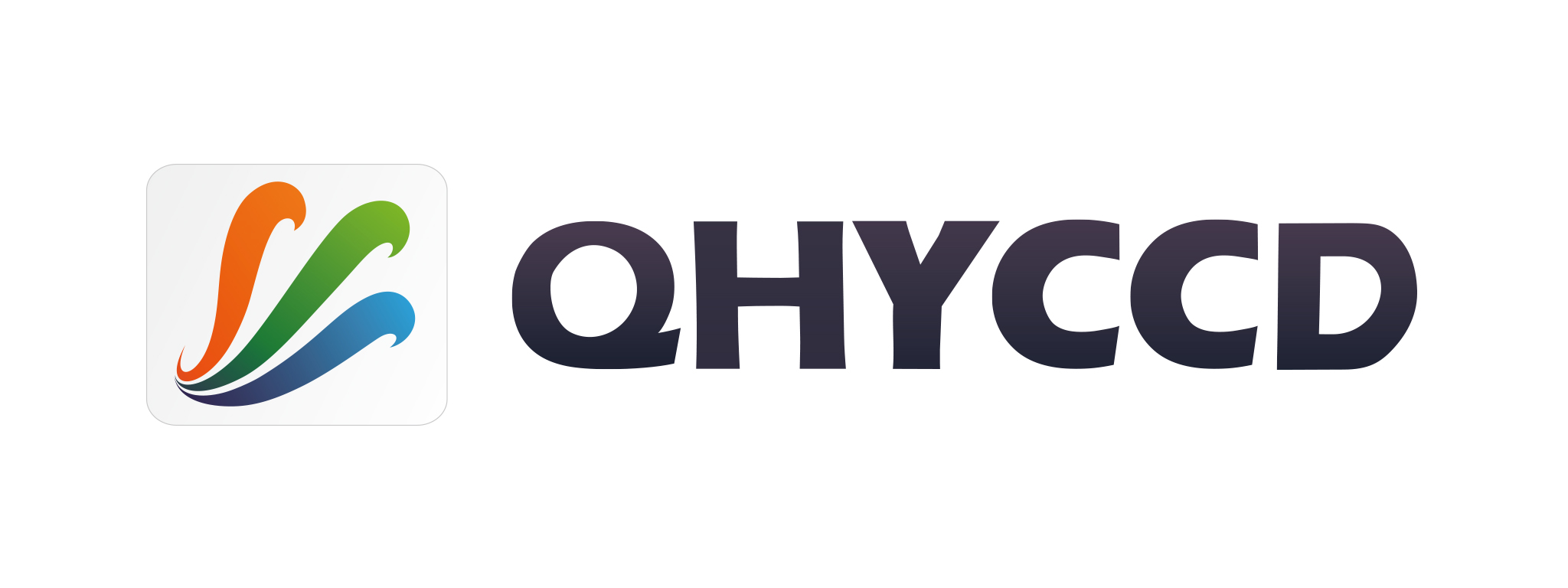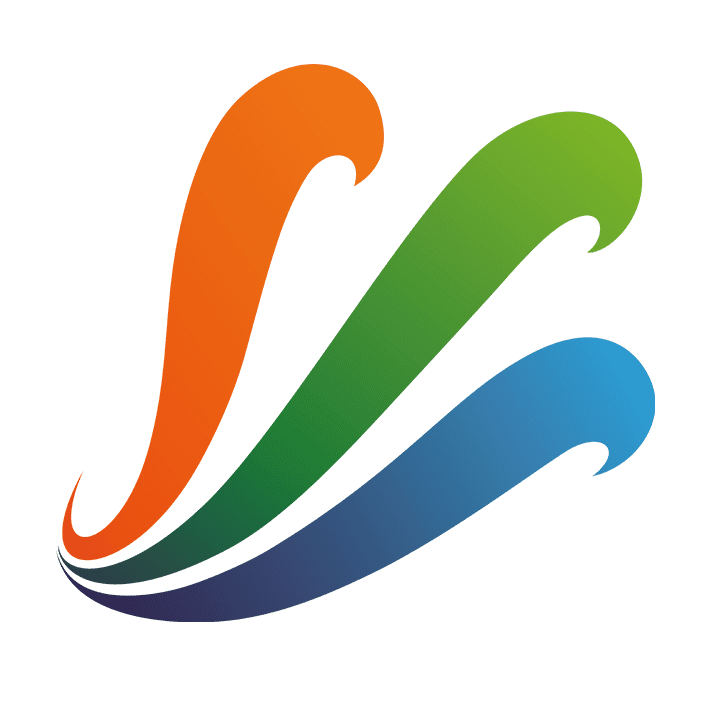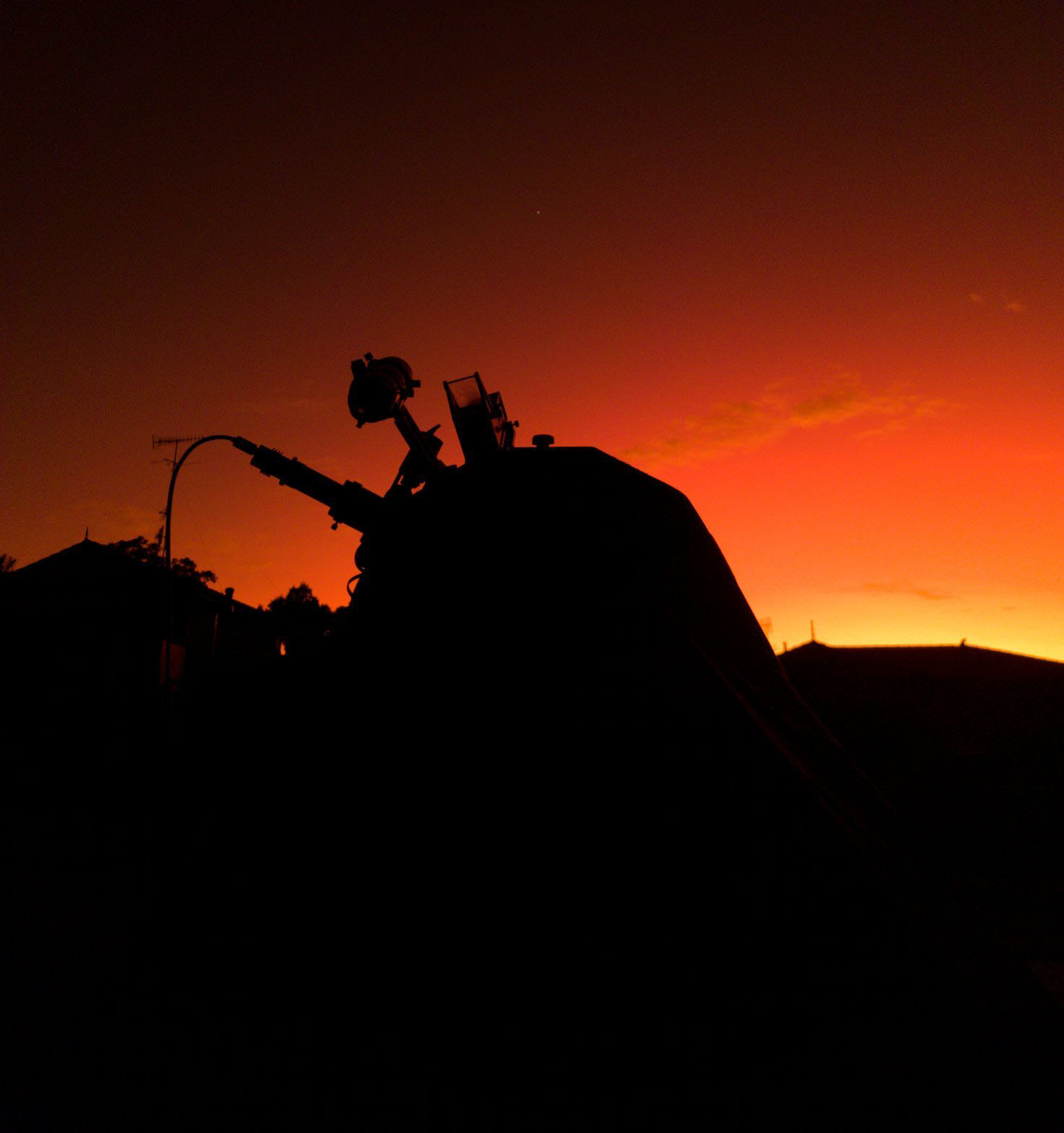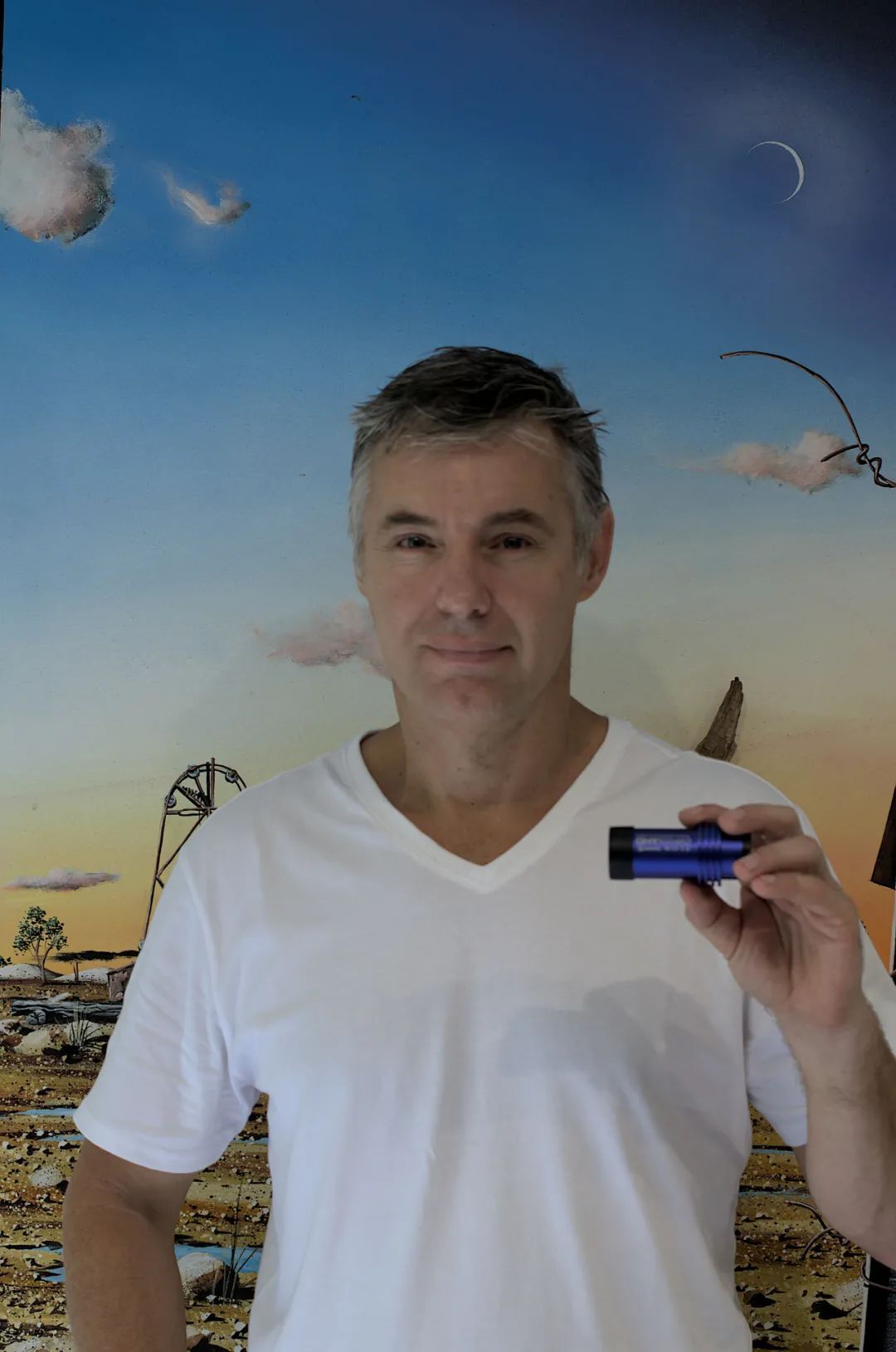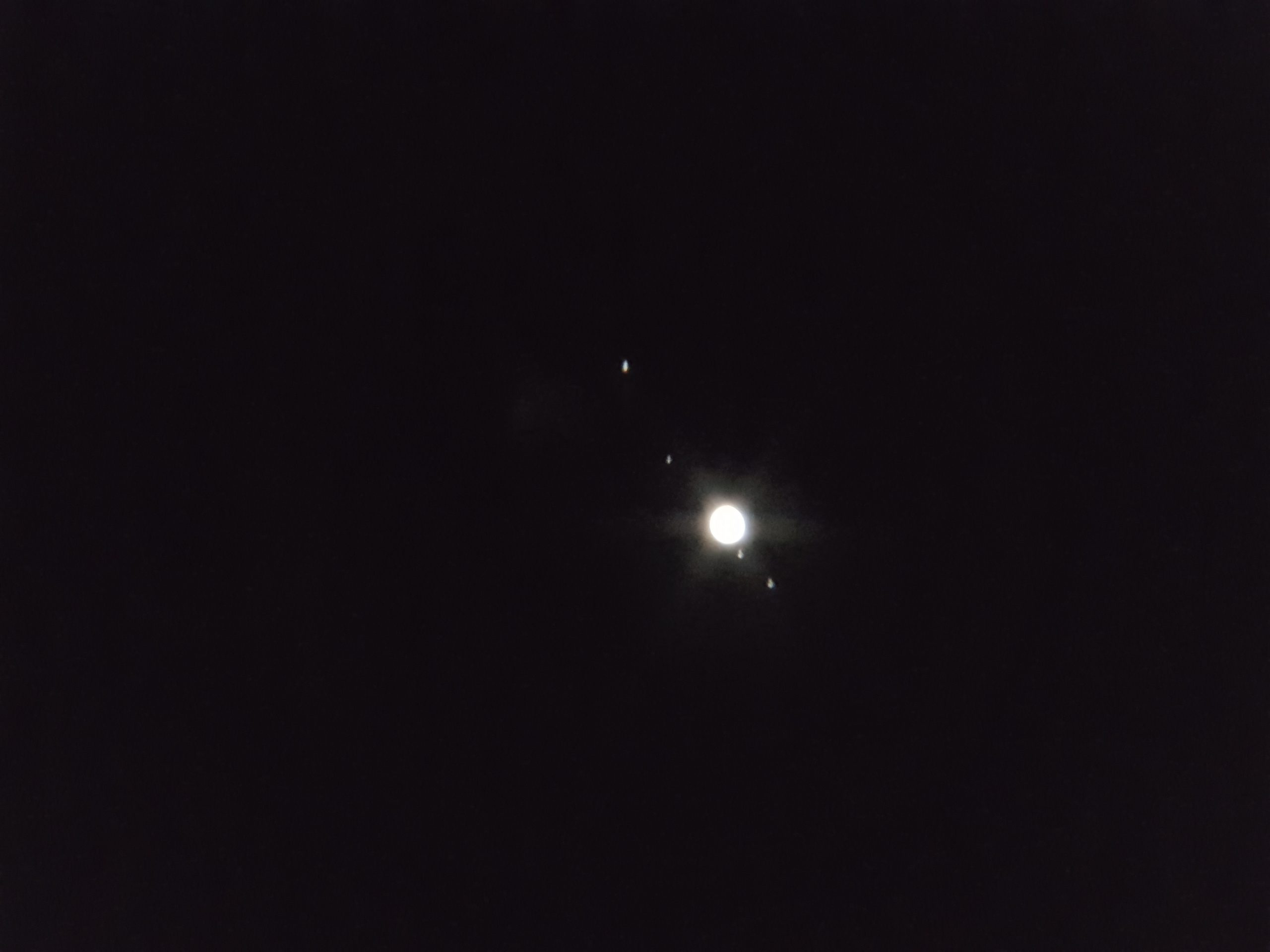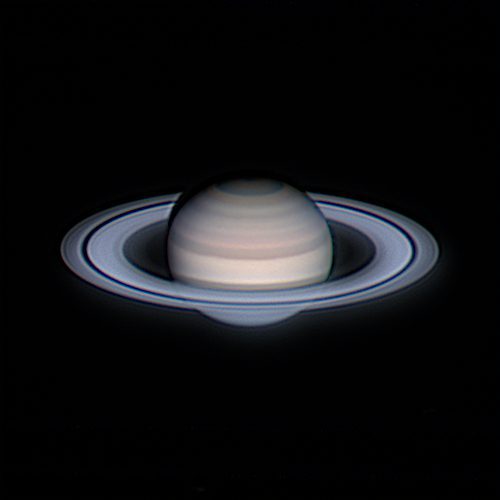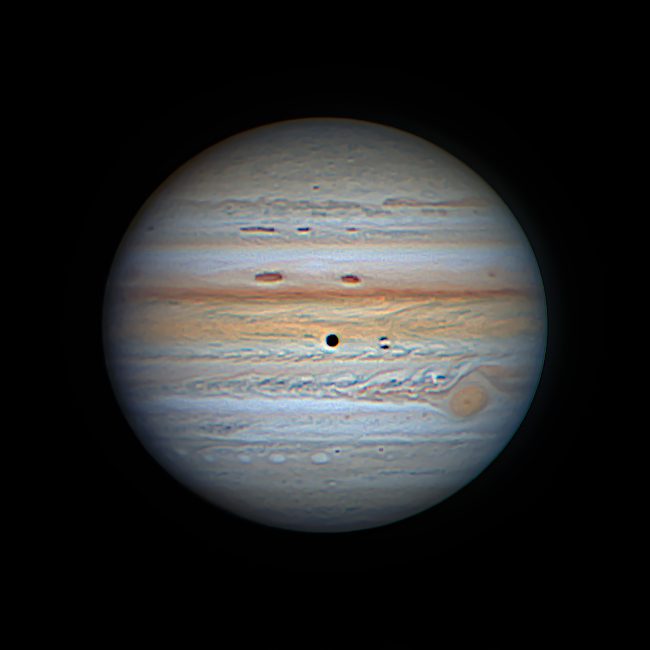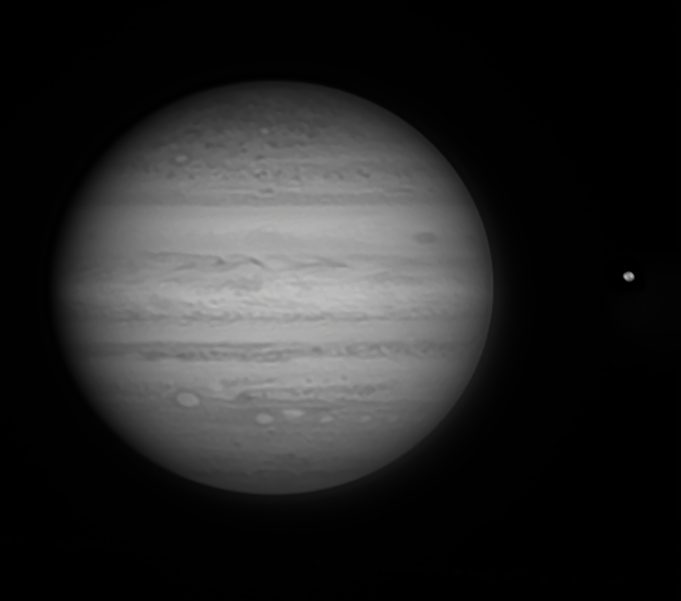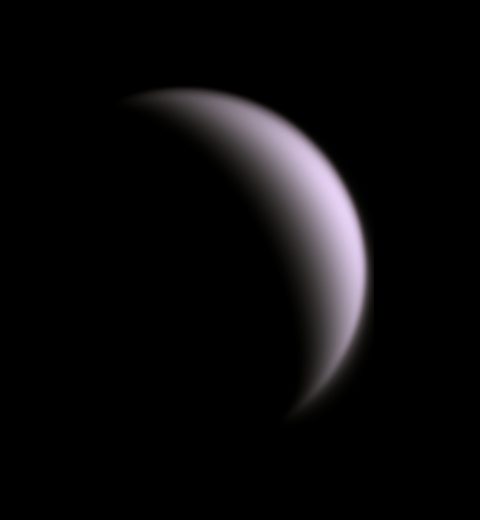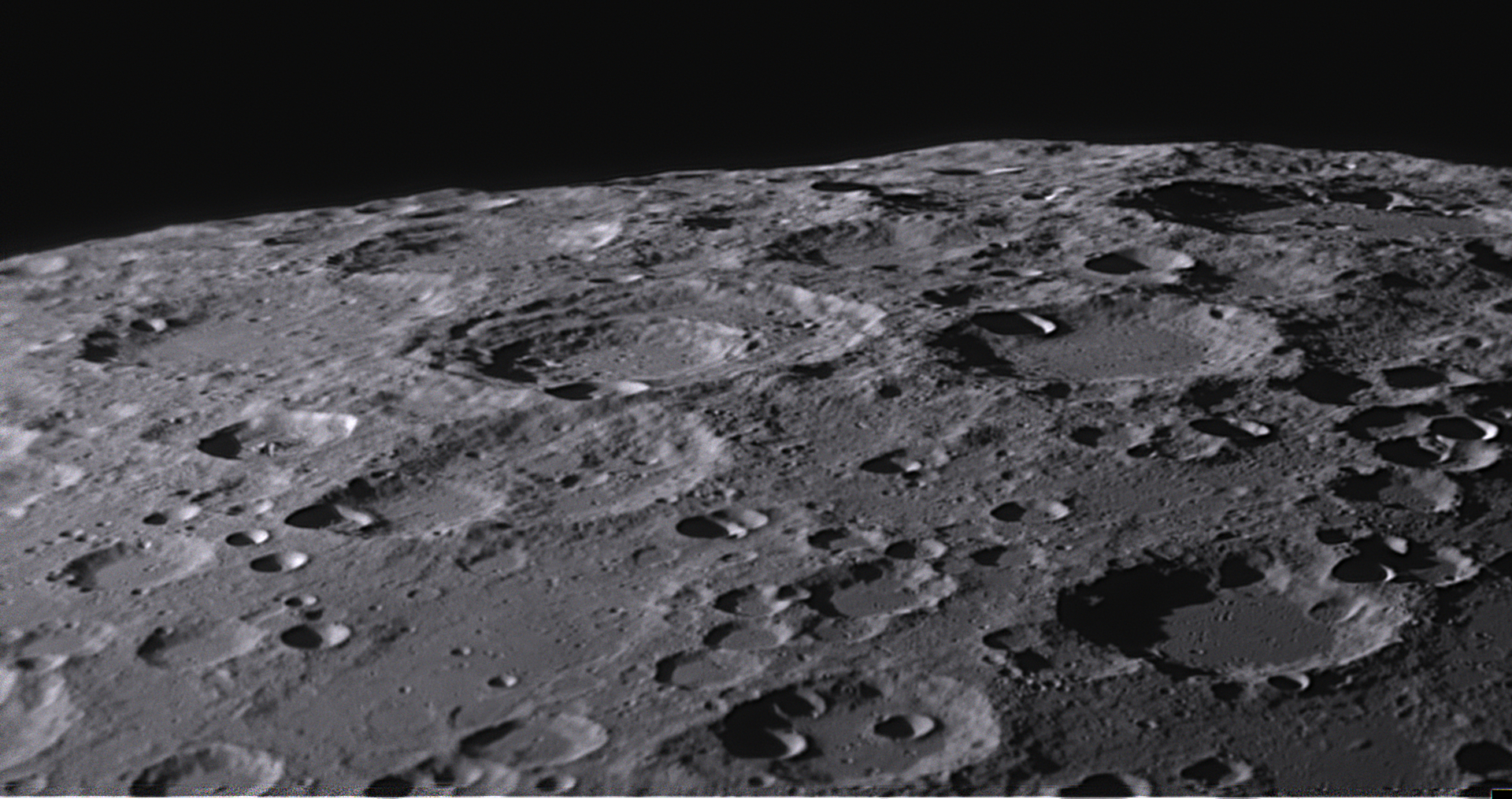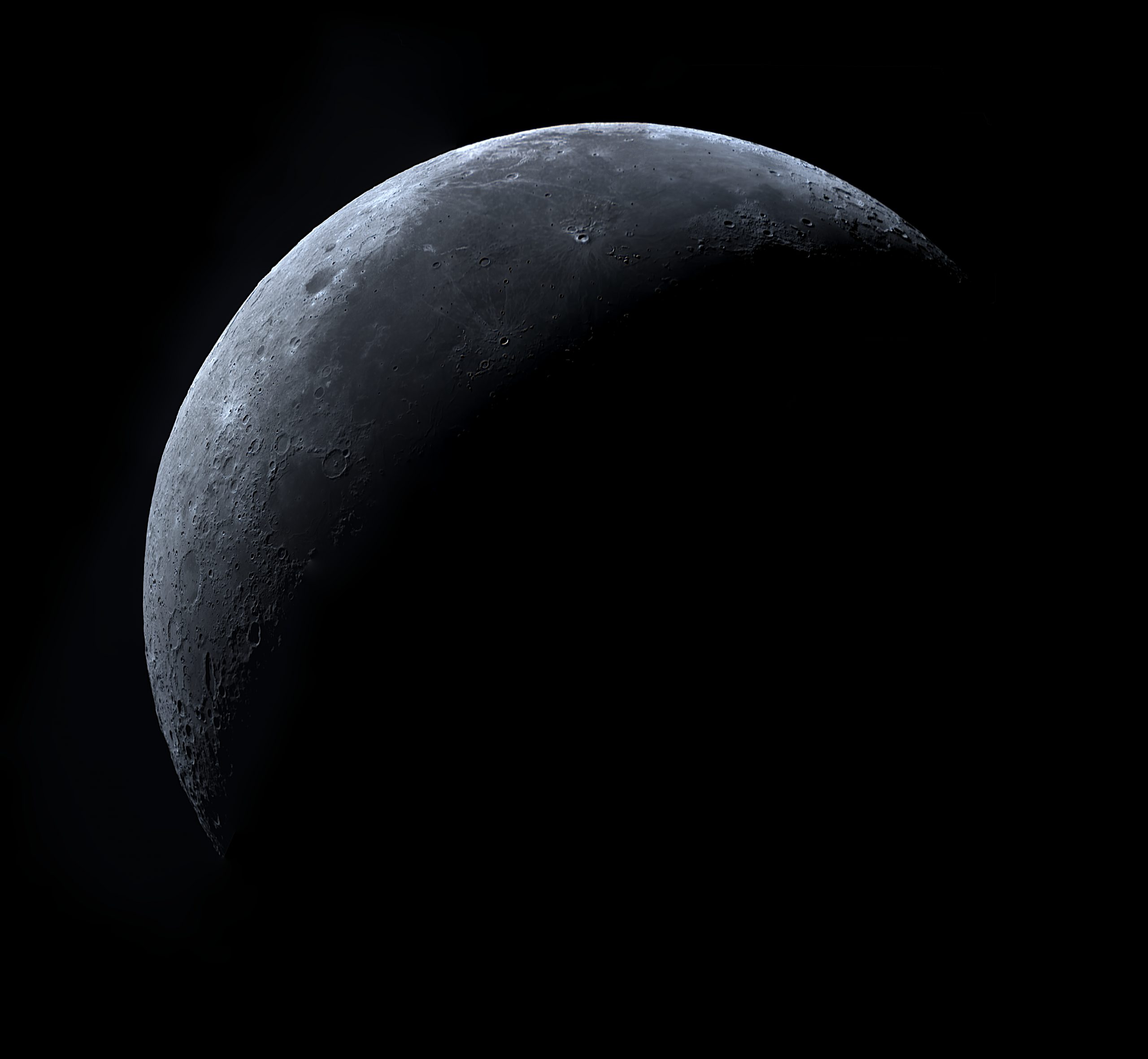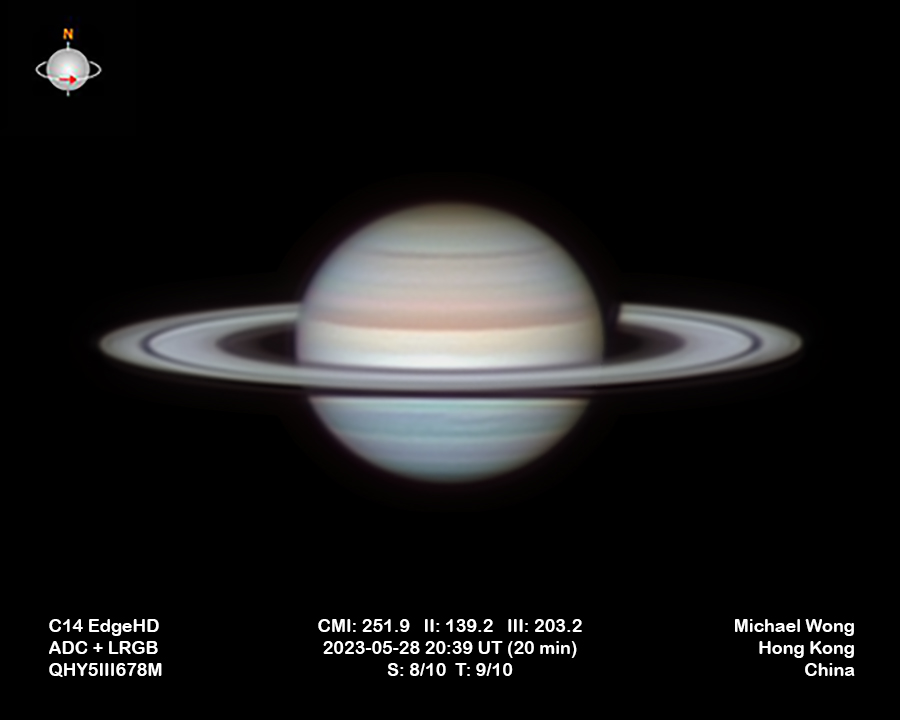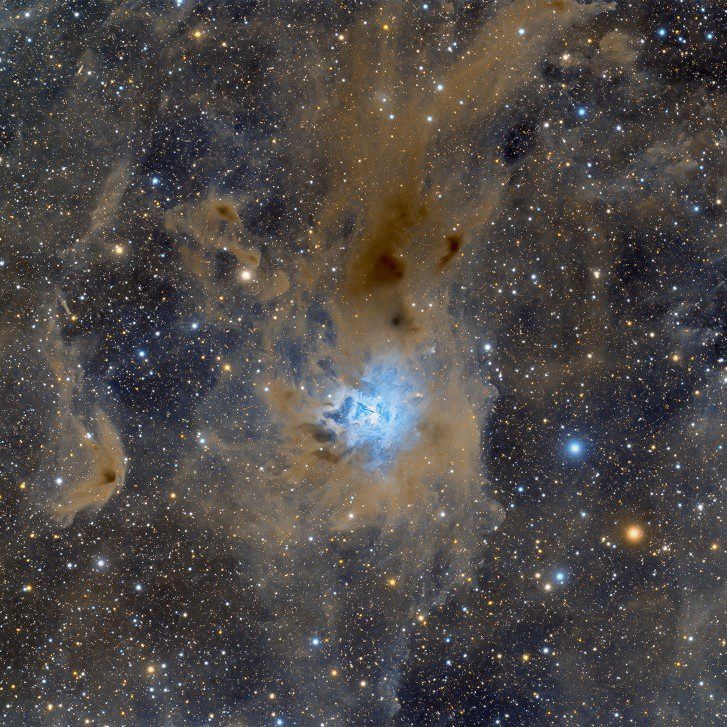QHYCCD: Hi Damien! We’re very pleased to invite you for this interview. We really like the planetary images you took with QHY camera. So, let everyone know more about you. Please give us a brief introduction of yourself.
Damien: Thank you so much Yilia for contacting me, it was a pleasent surprised to say the least. My name is Damien Kilmartin I live in Newcastle, Australia with my wife and 4 children. I have always been interested in the hobby of photography and the practic e of capturing and saving my experiences in life. And now in the last 7 months with the combination of my 16″ F4.5 UL Hubble Optics dobsonian the QHY5iii462c planetary camera and my home made equatorial platform i am producing planetary images that people enjoy looking at.
QHYCCD: How long have you been an astrophotography lover?
Damien: I have always had an interest in what lies beyond our atmosphere but as a child and young adult i was forever busy with sport, other hobbies, cars and friends. Apart from ocasionally using binoculars or a few shots of the night sky with my DSLR, space and its hidden beauty went largely unnoticed for 30+ years. But two and a half years ago I was getting groceries at a supermarket and i came across a National Geographic 67/700 eq mount telescope for $99 dollars and thought “why not”. 3 months later i bought a 2nd hand 10″ dobsonian which i still have. And about a year ago after a lot of research i puchased my 16″ f4.5 Hubble Optics Dob which i have used every time to do my planetary imaging, since the first night i put it on my EQ platform.
QHYCCD: What do you think astrophotography brings to you?
Damien: For me at this stage of my life its the ability to explore and discover new amazing things from the comfort of my backyard and home while remaining close to my family. I think there is also the piece and quite and ability to relax out under the stars that i really enjoy. I lay under the stars for 3 hours a month ago doing some deep sky imaging with my Nikon D7000 and Rokino F2 135mm lens only getting up every hour to reset my EQ platform. Planetary is also very challenging to get good results. It has so many different variables out of your control which is difficult. So it is very rewarding when you do get everything just right to take advantage of favourable conditions when they arise.
QHYCCD: Why do you like planetary photography?
Damien: Living in Australia’s 6th largest city under most likely bortal 7 to 8 skies probably decided for me what i initially tended towards. Because the planets are so bright relitively speaking you can even image them from the largest cities. So that is probably why i started with the planets. It’s so easy now with everybody having their phone camera, you can just put it up to the eyepiece and get started. The planets are always changing and with planetary storms, moon transits, phases and conjunctions it always keeps it fresh with no 2 images being alike. I am also taking interest in the ISS and Tiangong transits going forward as i have seen some great images that i would like to replicate as well. I have also tried some deep sky imaging but im not as good as with my planetary images so i don’t post the results.
QHYCCD: What is the first object you captured?
Damien: The first image i captured through a telescope was only two and a half years ago in 2019, the combination of the $99 telescope and my Samsung S7 phone i captured this image of Jupiter and its 4 major moons. I was very very happy with it to say the least.
QHYCCD: Could you share your favorite work with us, and tell us the reasons?
Damien: Of course, thank you for letting me share them with you. All of the images below were imaged using my 16″ F4.5 Hubble Optics dobsonian and the QHY5iii462c and its surplied filters.
This Saturn image was hidden gem because the initial image didn’t look like this, only after a discussion with a friend on twitter over image scale, i reprocessed this same data with a much better result than my original attempt 4 months before. With the inner C ring, Cassini Division and Encke Division all well defined and the shadow of the planet on the ring system almost make it look 3d.
This is my favorite RGB image of Jupiter, with its moon Io and shadow in transit. There are some fine details you can see in this image that amaze me sometimes. Look at the dark swirls in the centre orange banding or the defined spots 3 and 4 pixels wide on the lower equatorial belt, i have stared at this image for hours.
This is my favorite IR850nm image, again Jupiter and it’s moon Io
This softly processed Venus in IR850nm is a favorite, technically i have posted better Venus images but when i look at this one i like to think it could have been taken from a probe from a few million km away in the darkness of space and the softness is the upper atmosphere.
My favorite moon image is this one, Bousingault and Boguslawsky craters in the middle of the frame again with the IR850nm, with 360km from L to R edge of the image. Again could you imagine being on a lander looking out at this?
My first moon mosaic, 14 images stitched together. It was imaged at 18-25 degrees altitude (not ideal for clarity or sharpness). The reason was my computer crashed just before an ISS transit. I wanted to pack up and go inside but i thought im here now lets do “something” and not waste the night. This image is the result and about 7000 pixels across.
QHYCCD: Have you encountered any problems or interesting things in your capture? Could you share some with us?
Damien: The only problems i have had are user generated, like the ISS transit mentioned above that i missed was because i started a capture 10 minutes before the transit just to make sure everything was working. I stopped the capture with about a minute to go to start the actual pass capture but all the dropped frames had to be written to the SSD before it started the next capture, it was all my fault and i was very upset with myself at the time.
The QHY5iii462c has been rock solid with no issues over my time with it.
I did happen to randomly catch an ISS transit of the moon one time with my phone on my 10″ dob about mid 2020. But because of all the compression on phone video and the 60fps framerate it was not very detailed. But when i looked back at the date and time in Stellarium thats what it was.
QHYCCD: What tips do you have on planetary imaging?
Damien:
- There are a few different tips and tricks, here are some that when done will take a lot of the variables out of imaging and hopefully get you better images.
- Know your jetstream, look online and see what the jetstream is doing near you. If it is strong (100kp/h+) you will not get your best images. Look for something under 70kph in the 7000m to 11000m range and if possible the wind at lower levels coming in from over water.
- Plan you imaging session, lots of good material online to see where the planets are in the sky. If Jupiter has a moon transit or the GRS is showing for example. Focus on the ones that are higher in the sky because you look through a lot less atmosphere. I use Stellarium.org to plan my night.
- Ensure your telescope is collimated.
- Pixel scale. The 5iii462c has a 2.9um pixel size. The general rule is x5 gives you your targeted Focal ratio. If you happen to have an F5 scope you can then use the pixel size as a guide for the barlow you need to achieve the desired pixel scale eg. Use a 3x barlow to reach your desired pixel scale with the 5iii462c and an F5 scope.
- Focus is essential, take your time and get it right dont rush. 1 capture in focus is better than 100 out of focus and refocus every 15 to 20 minutes. When your captures are in focus processing becomes much easier as well.
- Use your historgram, keep your planets at around 75% or less, each one has different characteristics so try some different levels to see what works for you and your system. Don’t overexpose your planets in capture as you can never get them back in processing, when you apply any sharpening it overexposes the image even more.
- Dont use the fps as the ultimate guide, use your exposure time to freeze the motion of the atmosphere, particularly in average to poor seeing. Once your exposuure time is set use the gain to keep the image exposed correctly. Try to keep your gain between 250 and 350, i do use down to 200 on some occasions and imaging the outer planets you will use more but try and stay in that zone for the big 4.
- Post processing. Try all of the wavelet sliders and see what they do, in Registax the box next to the sliders will show you which part of the image it affects when you click on it. The first slider usually only adds noise, use it sparingly. Practice your processing when its cloudy out. The area i have improved the most in my short time imaging is in processing. I have reprocessed older images with much better result more than once lately.
QHYCCD: Which QHY cameras do you have? How do they perform?
Damien: I actually only have one dedicated astrophotography camera at this stage, it is the QHY5iii462c. With my large family i use a “needs and wants” approach with our finances. When possible i will buy another. As you can see from the images above and my twiiter account i am very happy with it. I have learned a lot in a short time and i intend to improve on my images from 2021 this year again.
QHYCCD: Which QHY product do you want to get next time?
Damien: The first one i would buy is the 5iii485c, it has the same size pixels as my 5iii462c so i could use the same image train to get the same detail and correct image scale without changing anything, and with the larger sensor size it would add great flexibility to my imaging and open up new possibilities. I also plan to buy a one shot colour DSO camera maybe next year for when the planets are not well placed, but i have not even started researching or saving for that one yet.
QHYCCD: What imaging plans do you have for this New Year?
Damien: Planning to improve with my imaging first and formost with what i have learned. To try and put together a reasonable image of Pluto and Charon is a goal which will heavily rely on conditions as it about the same magnitude as Neptunes moon Trition. I have started imaging Mars even though it is very very small and will be able to watch it grow over the next 9 months. One of Saturns larger moons Iapetus will transit the planetary disc on the 30th of April so i would like to image that. Uranus i have not yet even imaged and i want at least a few ISS passes this year. And also be in the right place at the right time for each different planets opposition. So lots and lots on the to do list Yilia.
Thank you very much to you Yilia and QHYCCD for taking an interest in my imaging, it was great to talk. If there is anyone with any questions about my experiances, images or the QHY5iii462c get in contact with me on Twitter @damo251 if you follow me you can then DM me. Other well known imagers have been generous with their learnings with me and i intend to keep this trend going. Clear Skies to All.
